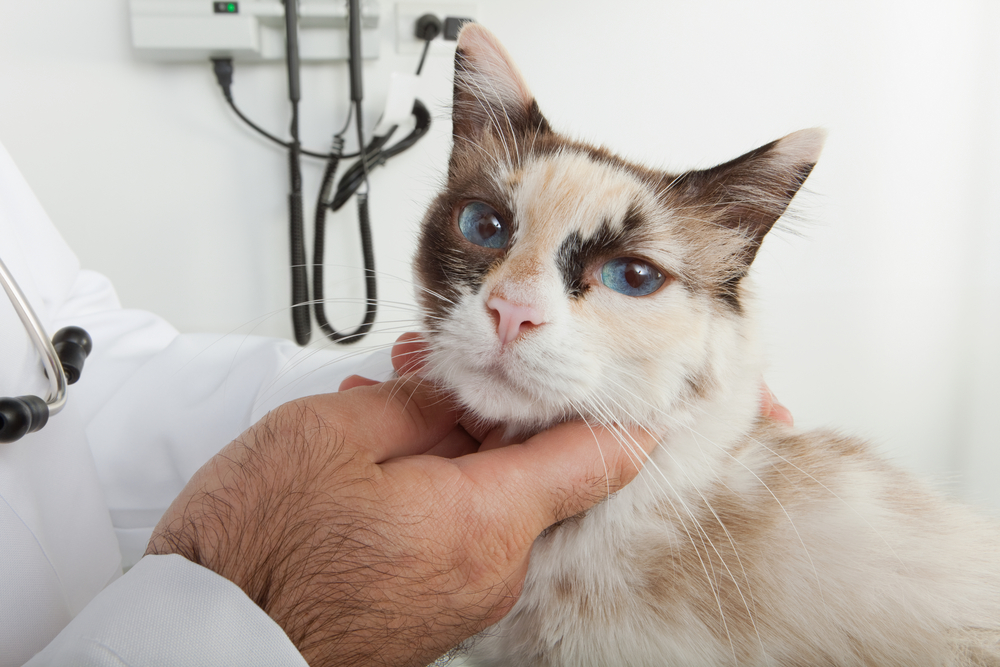Recognize symptoms of cancer or tumors in cats. Cancer or tumors is much more common in dogs, but cats can also be affected. Older cats are especially prone to cancer. Early detection of cancer is important for proper treatment. However, cats tend to mask disease and that can make it difficult to detect cancer early.
Symptoms that can indicate cancer or tumors in a cat include a bump, lump, or bump that will not go away or increase in size. As well as excessive vomiting and diarrhea, refusal to eat or an abnormal appetite. These complaints can also indicate another condition. That is why a good diagnosis by the vet is important.

Cancer or tumors in cats
Cancer or tumors is common in older cats, but younger cats can also be affected by this disease. Cancer or tumors is more common in dogs than cats. The ratio is probably 2: 1. Cancer or tumors in cats is often more aggressive in nature than cancer in dogs. It is important for cat owners to recognize the early signs and symptoms of cancer because the sooner cancer is detected, the more likely the treatment will be successful. Cats tend to mask disease, which can make it difficult to detect cancer early.
What is Cancer?
Cancer or tumors is uncontrolled and uninhibited cell growth. It can occur in all types of cells and in all organs in the body. The word “tumor” is the Latin word for swelling and is often used by laypeople as a synonym for cancerous growth, although a tumor can be both benign and malignant. Cancer is only referred to in malignant tumors. A benign tumor grows slowly, usually in one place.
This makes it quite easy to remove by surgery or freezing. Malignant tumors, on the other hand, grow very quickly, infiltrate their environment and metastasize throughout the cat’s body. This makes it difficult to remove malignant tumors with surgery.
What are the Different Types of Cancer or tumor in Cats?
Cats can develop many of the same cancers that humans get, although most cats will develop cancer or tumors of any of the four categories below.
Reading suggestions: Boy Cat Names – Find the Perfect Male Kitten Name
Skin tumors
White cats are particularly susceptible to this, especially on the tips of their ears and around their eyes. Any cat with a bump on its skin should be examined by a vet as soon as possible.
Lymphoma
This is very common in cats. About a quarter of all cases are associated with the Feline Leukemia Virus (FeLV) or leucosis. This virus disease can cause tumors, among other things. The most common tumor is malignant lymphoma (a cancer of the lymphocytes, a type of white blood cell that is part of the immune system), but leukemia, tumors in the liver, kidneys, spleen, or peritoneum can also develop. Excessive vomiting and diarrhea, breathlessness, fever, lethargy and lethargy, lymph node swelling, poor eating, and weight loss are common symptoms.
Tumors in the mammary glands
Tumors in the mammary glands are often found in older queens. Unfortunately, more than 85% of these tumors are malignant. Subcutaneous lumps can then be felt near the nipples. The only treatment option for mammary gland tumors is surgery, in which the tumors and surrounding tissue are removed.
Reading suggestions: 200+ Unique Female Cat Names for Your Cute Companion
Abdominal tumors
Abdominal (abdominal cavity) tumors are another common cancer in cats. They are much more difficult to diagnose at an early stage. If your cat is vomiting and has diarrhea for several weeks, take it to the vet for an examination.
What are common cancer symptoms in cats?
Cats are good at hiding disease. That makes it difficult to signal that something is wrong with your pet. Cats can show the following symptoms if they have cancer:
- Excessive vomiting and diarrhea.
- Refusal to eat, loss of appetite, difficulty chewing or swallowing, and weight loss (slimming).
- Or abnormal appetite, possibly in combination with weight loss.
- A rough coat.
- Lethargy, apathy.
- Reduced stamina.
- Loss of blood or other discharge from a body orifice.
- A bulge or lump that will not disappear or increase in size.
- A wound that does not heal.
- Difficulty or problems urinating or producing a stool.
- Unexplained bleeding (loss of blood) or other discharge from a body opening.
- Breathing problems: breathlessness and coughing.
- Persistent lameness or stiffness.
- Bad, unpleasant, or malodorous odor.
If your cat shows any of these symptoms, contact your vet for a check-up.









